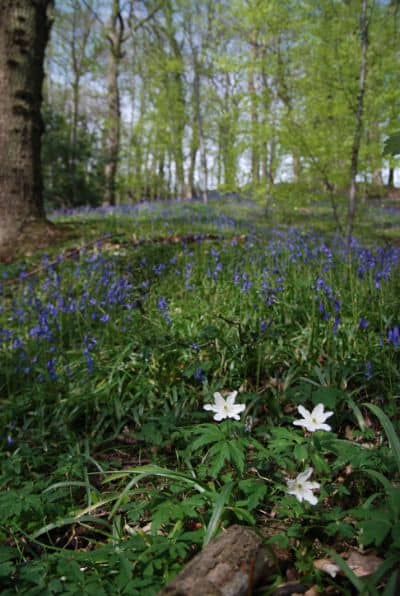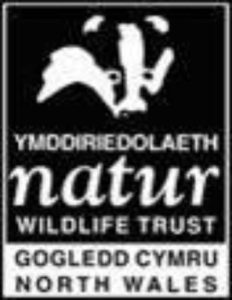This month’s walk visits three wonderful woodlands: the Wildlife Trust’s Coed Trellyniau Nature Reserve, the privately owned Rhoft Wood with lovely examples of coppiced woodland and Gellibach Wood, which has evidence of lime kilns typical to the area.
Disclaimer
Our walks follow public footpaths as indicated on OS maps wherever possible.
You must read, understand and accept our disclaimer before you attempt any of our walks.
By Road
Head north at the Cilcain/Rhes y Cae crossroads on the A541 (signposted Rhes y Cae). Stay on the road for 1km and park in a small layby on the L just after the entrance to Fron Farm caravan park (SJ 186 689). Do not block the field gate.
This route goes through fields with livestock and includes stiles. There is also a steep section that can be slippery when wet. Please note that some of the route is on roads so care should be taken.
Walk details:
Walk distance: 2.4 miles (3.9 km); approximately 2.5 hours
Map reference: OS Explorer 265

Flora and Fauna Abound
Start by walking westwards down the signposted footpath. The green lane has high hedges and, in summer, is filled with wild flowers such as crosswort, dog rose, bush vetch, buttercup and red campion.
At the stile, continue along the right-hand edge of the field towards the block of woodland ahead. Listen carefully for the rustles and high-pitched squeaks of small mammals such as shrews. In winter, mixed flocks of fieldfare, redwings, mistle thrushes and song thrushes scour the fields for food.
Climb a stile to a field that may contain cattle. Keep dogs under control near animals (if chased, however, it is safer to let go of the lead). Head for a stile in the corner of the wood ahead and enter the Wildlife Trust’s Coed Trellyniau Nature Reserve. Coed Trellyniau is locally renowned for spring bluebells. These, and flowers like wood anemone, wood sorrel and wild garlic, show that it was once an ancient woodland of ash and oak. Follow the right-hand path. Straight rows of trees show that the wood was felled and replanted with beech and pine. Look for badger scrapes or pine cones nibbled by grey squirrel. Lucky walkers may spot brown hares that frequent the woodland.
Toads, Slugs and Insects
Leaving the wood by the stile, keep the old hawthorn hedge on your left and the reserve behind you. Head downhill to a stile on the left. Walk through an enclosure, where you can see meadow saxifrage in May, to a third stile in the far right-hand corner.
Climb the stile and, on the track, turn left. This quiet lane is perfect for a minibeast hunt. The long grass at the hedgerow edge makes a great home for toads as there are plenty of slugs and insects to eat.
When you reach the tarmac road, listen and watch for cars and then turn right. Continue along the road, down a hill and cross a stile on the left into an ash wood with a large sweet chestnut tree at the entrance.
Summer birdsong in Rhoft Wood includes chiffchaffs and great tits. Foxgloves and yellow pimpernels line the path, which can be uneven and muddy. There are areas of wet willow woodland down the slope and, as the path descends, look for rowan and hazel coppice to your right. If you follow your nose in summer, you might find the fabulous and well named stinkhorn, from the phallaceae family of fungi.
Moths and butterflies

At the bottom of the hill, leave the wood over a metal stile and turn left on a wide track. Walk uphill to the road, then turn right. On sunny days in the warmer months, the wildflowers in these sheltered lanes make them a haven for day-flying moths, and butterflies, such as the large skipper and speckled wood.
At the first house you reach, there is a wide verge with cowslip and orchids in spring and summer. Just after the junction on the right, take the footpath through a field gate on the left. Once through the gate, about 10m in, follow the path that bears off to the left, following a dry-stone wall up through the trees. Shallow cliff faces and pits indicate old lime kiln workings to your right.
Go over the next stile into a wide, walled track. At the end, turn right and keep under the tree cover. After Pen y Gelli farm, the track is more rutted underfoot. Dock and umbellifers such as hogweed flourish here. In summer, look out for birds such as wren, dunnock, whitethroat and blackcap. Follow the track to a stile after a left-hand bend which brings you back to the green lane where your walk began.
Article and photographs have been kindly supplied by Mark Roberts, Membership Marketing and Recruitment Manager at The North Wales Wildlife Trust. Become a member or sign up to their monthly newsletter at northwaleswildlifetrust.org.uk.


